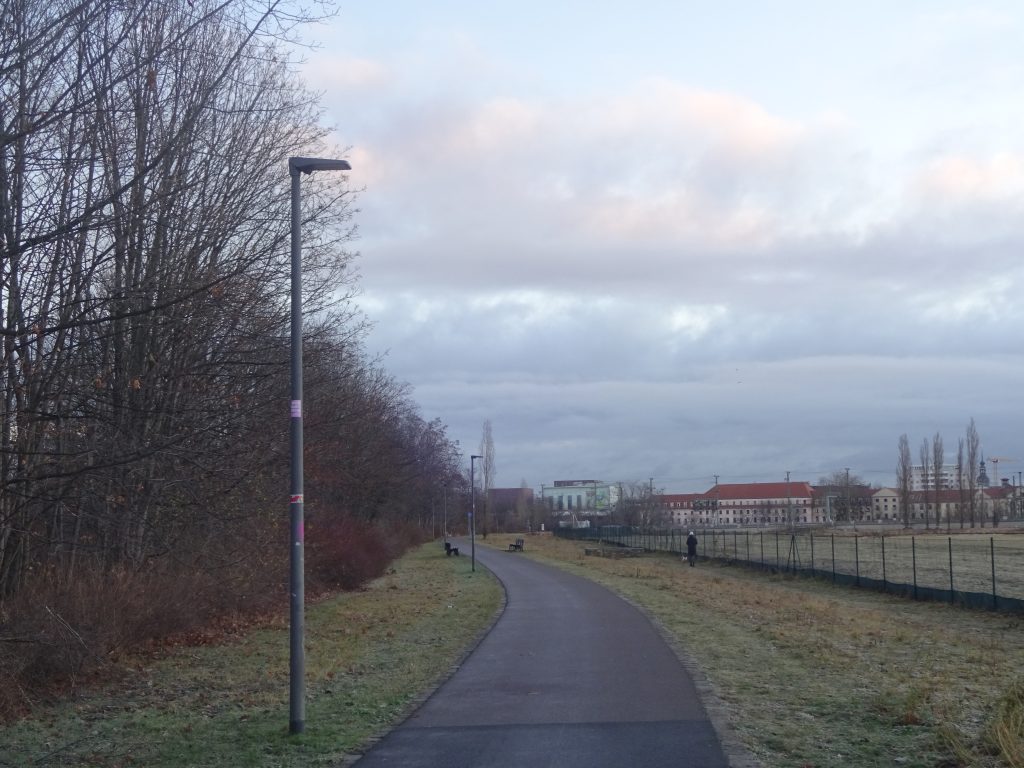Along the path on the Weißeritz green corridor, the 33 lighting poles have been replaced by new luminaires with LED technology. The lights are also equipped with a control system for movement-dependent lighting. They come on dimmed as dusk falls, and only turn on fully if motion sensors detect pedestrians and cyclists.
Once the people go out of range of the motion detectors again, the lights are dimmed after about half a minute. The neighbouring lights are networked and thus exchange information on motion detection; moreover, the entire system can be monitored and controlled by the Roads and Public Works Department via an internet connection.
Simone Prüfer, head of the Roads and Civil Engineering Office says: “In addition to extra energy savings, we also expect the new control system to help protect nocturnal animals and reduce night-time illumination from the city “.
The cost of the lighting systems is around 26,600 euros. The Office for Economic Development is financing the adaptive lighting system as a smart city solution through funds from the EU project MAtchUP. Mr Robert Franke, Head of the Office for Economic Development explained “We want to turn Dresden into a smart and sustainable city. The conversion to LED technology alone saves 60 per cent electricity, and with automatic brightness control we want to exploit the technical possibilities to a maximum.” This is also where the accompanying research lies, where in particular the actual energy savings and lamp failures are recorded electronically.
The adaptive street lighting thus represents an alternative to the lighting control system otherwise used in towns. All LED luminaires and many conventionally operated luminaires in the main road network are operated dimmed to approx. ¾ of the normal power between 10 p.m. and 6 a.m. via a so-called phase-controlled half-night circuit.


